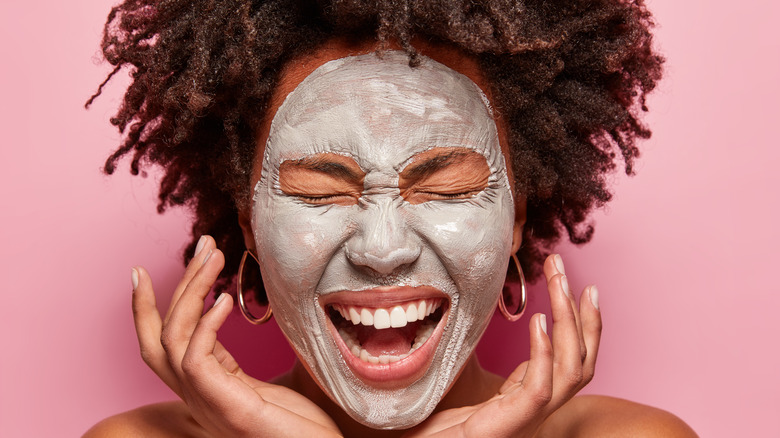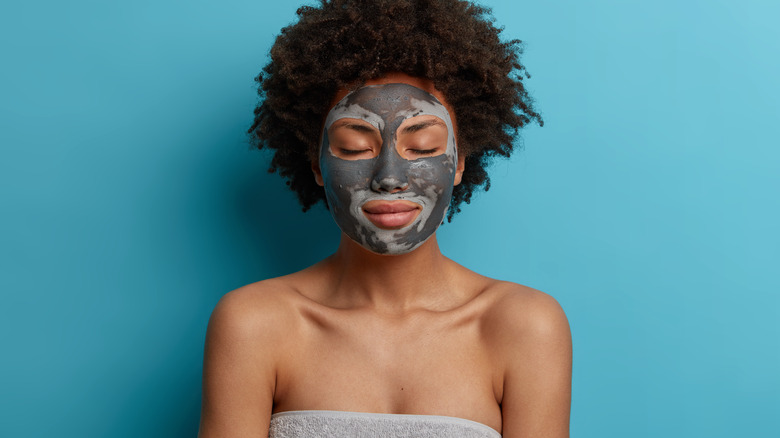Here's What A Clay Mask Can And Can't Do For You
We may receive a commission on purchases made from links.
If oil is your skin's worst enemy, then a clay mask might be your best friend. According to Glow Recipe, people have been putting clay on their faces to treat their skincare concerns for over 5,000 years, and it's not hard to understand why. Not only does clay absorb pesky excess oil, unclogs pores to treat blackheads and acne, it also exfoliates — all essential actions for oily-skinned owners to control excess shine, leading to a smoother, brighter canvas. "Clays help to detoxify the skin and draw out impurities and oils from the surface of the skin. This is especially helpful to those people with acne or oily-prone skin." Cosmetic chemist Peter Konish told Dermstore. The most common type of clay mask out there is made with green clay, which tends to be the most absorbent.
Clay masks may be one of the best steps you can take in your skincare routine if you're having a particularly greasy day. However, they are not the be all, end all, and they are some considerations that need to be made before you slather one all over your face.
Clay masks should be used with caution
Even though clay masks can be a holy grail for those who suffer from oily skin, don't mistake them for a replacement for cleansers or moisturizers in your skincare routine. Although clay masks unclog your pores and exfoliate, a decent daily cleanser (ideally a gel cleanser for oily skin types) is still necessary to remove environmental impurities in your skin. Clay masks can even lead to increased dryness, so it's essential to pair your favorite mask with a facial lotion — ideally a lightweight, oil-free lotion for oily skin types, according to New York Magazine — for your skincare routine as well.
Although the benefits often outweigh the side effects when it comes to clay masks, there are some risks to be aware of. According to Healthline, their ability to strip the skin have been reported to lead to irritation, such as itchiness, redness, and even rashes, especially when you let them dry for too long. Because of this, many skin specialists recommend that you limit your use of clay masks to twice a week maximum.

